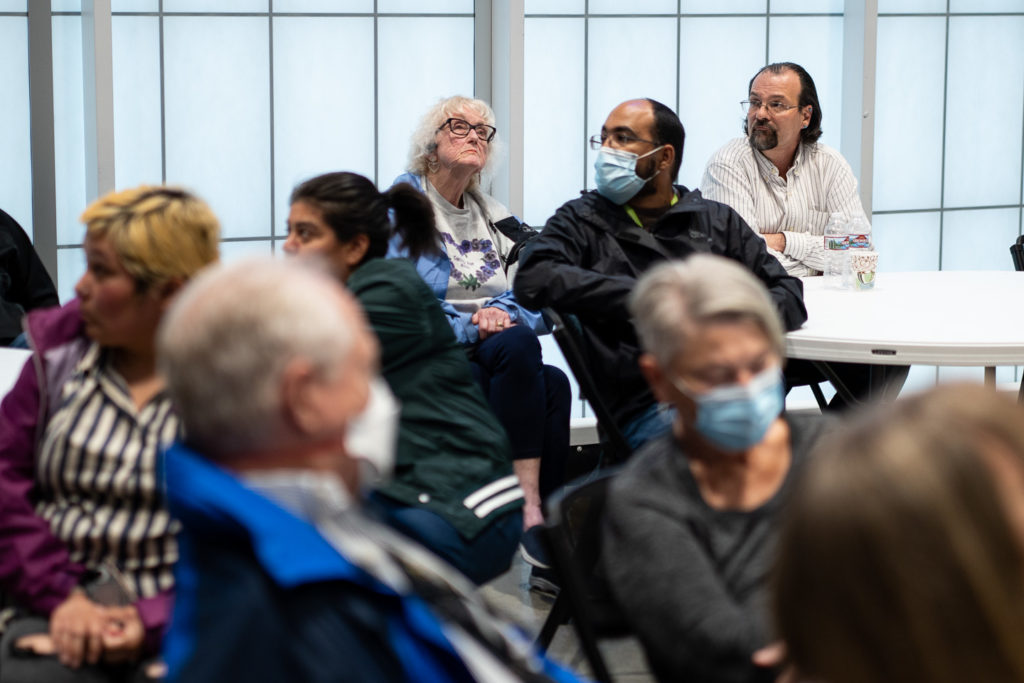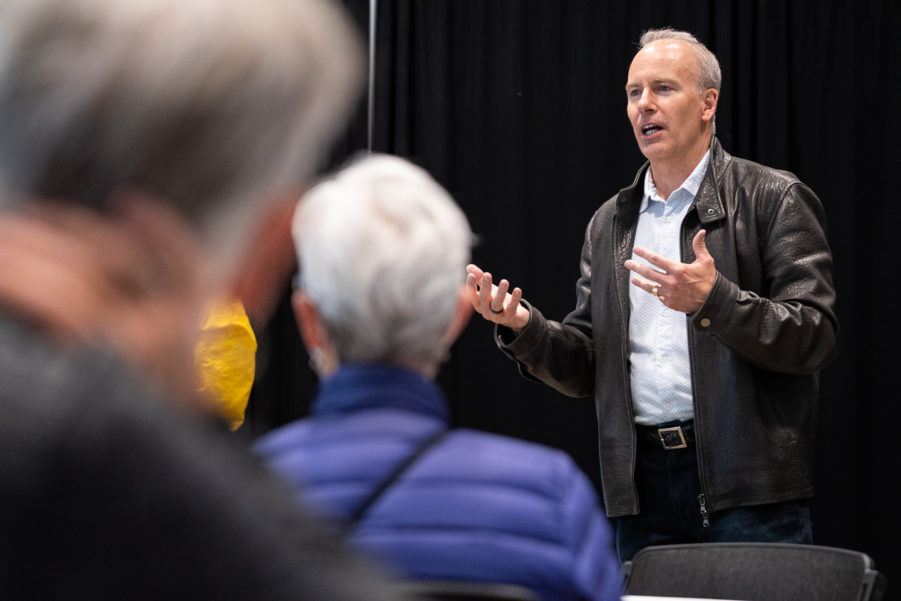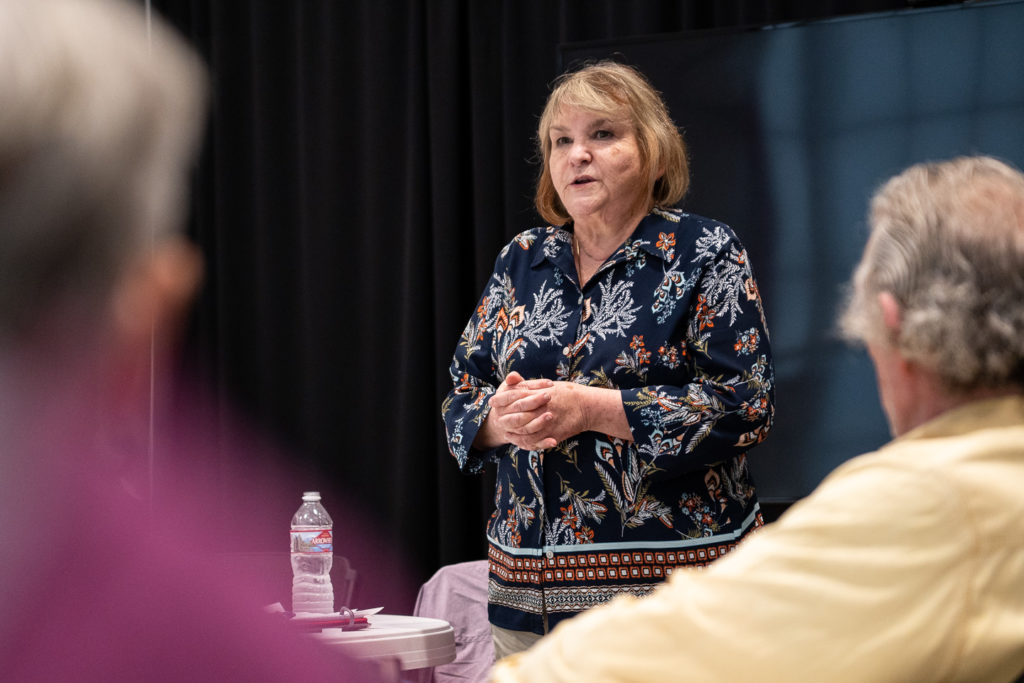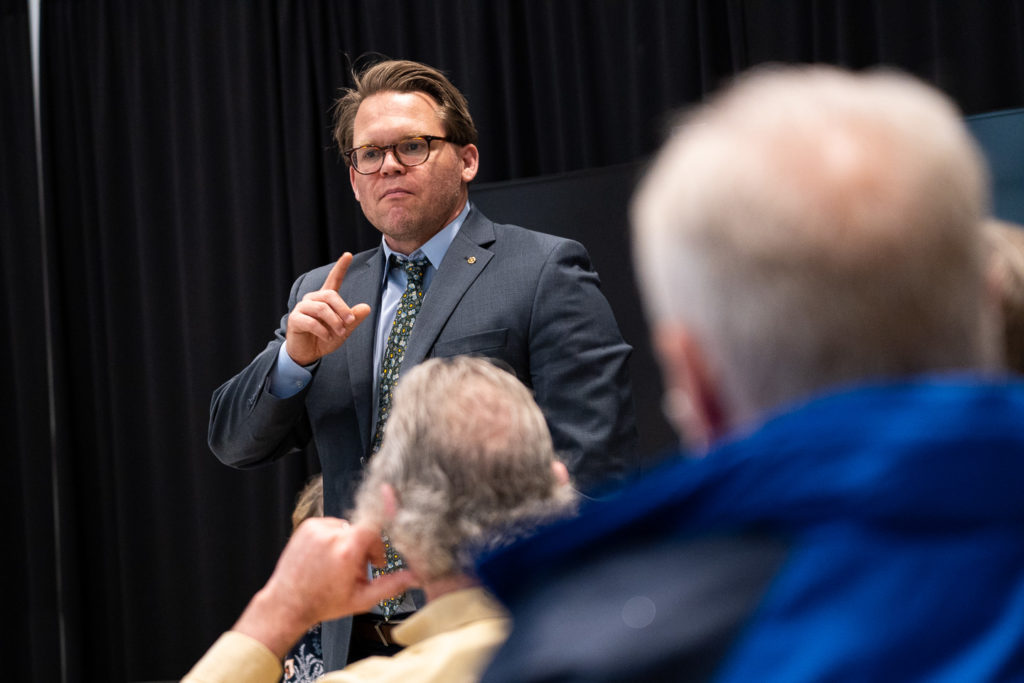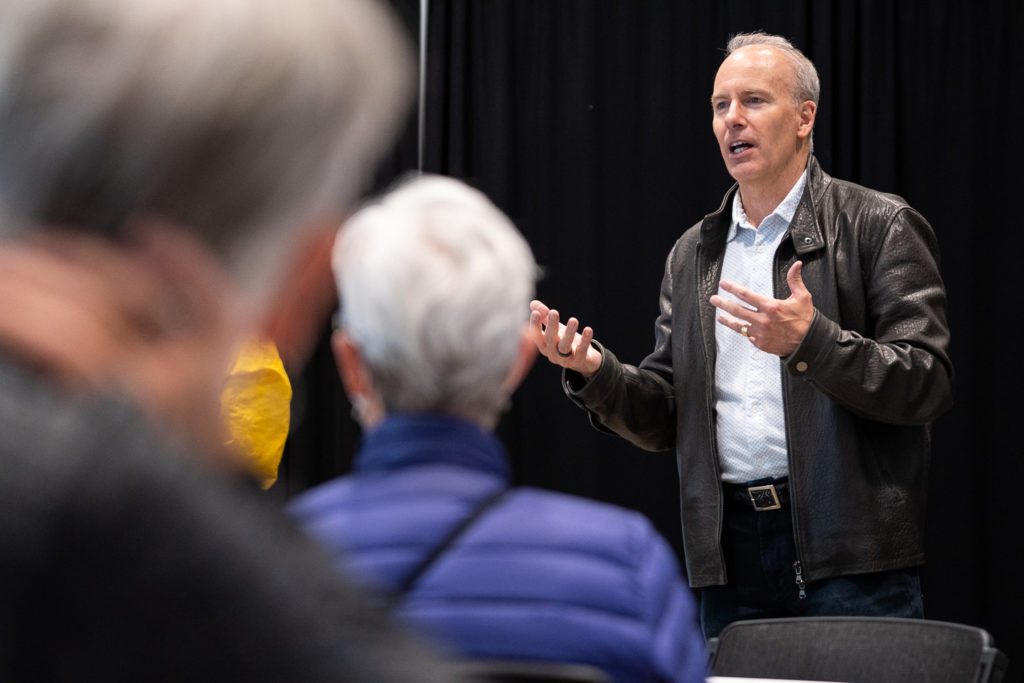
Lakewood Mayor Jason Whalen hosted a “Community Coffeehouse” on Thursday to discuss housing affordability and homelessness.
Speakers included Janne Hutchins from Living Access Support Alliance (LASA), a local provider of permanent supportive housing and homelessness prevention services. Jason Gauthier represented the South Sound Housing Affordability Partners, a group that marshals regional housing policy. Steve O’Ban represented Pierce County.
The cost of housing is exploding in Pierce County. Lakewood remains the second most affordable place to live in Pierce County, but rents rose 16% in 2021. The region continues to experience shocking growth, stressing a limited housing supply. New housing construction has fallen by nearly 80% from its high point decades ago.
The City’s Long-Range Planning Manager Tiffany Speir described the situation as “the Alligator Problem”. Forming a wedge with her arms, Speir pointed to a downward trend in real wages and an upward trend in costs.
“As wages and costs separate, the alligator’s mouth gets bigger and bigger,” said Speir.
In response, Lakewood is trying to improve the economics of housing construction. More housing is needed, and incentives are one instrument to attract construction.
Multifamily housing tax exemptions help catalyze new development. The LMC 18A.90 Housing Incentives program increases density standards, relaxes development standards, and discounts fees. In exchange, developers build housing for low-income residents. Low-income households are defined as making an adjusted gross income (AGI) of 50% or less of the area median income (AMI).
At the regional level, the South Sound Housing Affordability Partners (SSHAP) is comprised of 13 cities and towns and 2 tribes. SSHAP is consolidating policy to advance housing affordability, attainability, and accessibility countywide.
Gauthier estimated that about 3,900 new housing units are built each year in Pierce County. This rate is insufficient. Gauthier cited projects that Pierce County will require 129,000 more housing units ten years from now.
Gauthier also stressed that housing is a continuum. From mobile homes to apartments to single-family homes, each tier of housing is critical to attainability. The group intends to build and preserve housing throughout that continuum.
Lakewood’s Assistant City Manager Dave Bugher described examples of housing preservation like the City’s rental housing safety program. Every rental unit is registered and subject to inspection. Renters can also report unsafe conditions. When unsafe units are discovered, the City may relocate tenants and begin legal action against the landlord. Over 30 properties in Lakewood are in some phase of abatement by the City.
Mayor Whalen also cited economic development projects that address the other “jaw” of the alligator – wages. Lakewood has attracted record-breaking investment and large-scale employers in recent years. Continued economic growth, said Whalen, is a rising tide that will lift every resident.
The fact remains that many Lakewood residents have fallen from the speeding treadmill. Homelessness is on the rise – about 2,500 people are homeless in Pierce County.
Living Access Support Alliance (LASA) works to prevent recurrent homelessness. LASA offers permanent supportive housing for over 75 families each year. With the City’s help, LASA is now building a hygiene center to allow clients to shower and do laundry.
“When LASA started, my dream was big, but the City of Lakewood’s dream was THIS BIG. Lakewood has shepherded us to secure over $600,000 for this hygiene center. Their support has been essential,” said Hutchins.
LASA will soon build 25 more units of affordable housing. While the increased capacity may help, Hutchins warned of troubling signs. In the last three months, 90% of those seeking shelter were homeless for the first time.
Lakewood contributed ARPA funds last year in a joint effort to convert a local hotel into an emergency shelter. The City is open to similar projects in the future, and innovative new suggestions.

Pierce County Senior Counsel Steve O’Ban has frequented a project in Austin, Texas that he called a “stunning success.” The Community First project is a community of tiny homes for individuals at risk of chronic homelessness. A small rent must be paid and rules must be followed, and residents come to feel palpable community pride. The community’s retention rate is over 80%, more than double the retention rate of most local shelters.
The success of the project has attracted private donations, sparing some load upon local taxpayers and expanding the project well beyond its original goals. 250 units were planned at the onset, and 2,500 units are now built.
Shelter, homelessness prevention, mental health services, development incentives, housing preservation programs, code enforcement, regional policy, and economic development are all small pieces of a very big puzzle. Every piece is as important as the next, and the City is working from all angles to shrink the alligator’s mouth.
Held every other month, “Coffeehouses” address hot issues and invite questions from residents. The next session is scheduled for July 28. The topic is yet to be decided. Sign up on the City’s website to be notified of future sessions.
